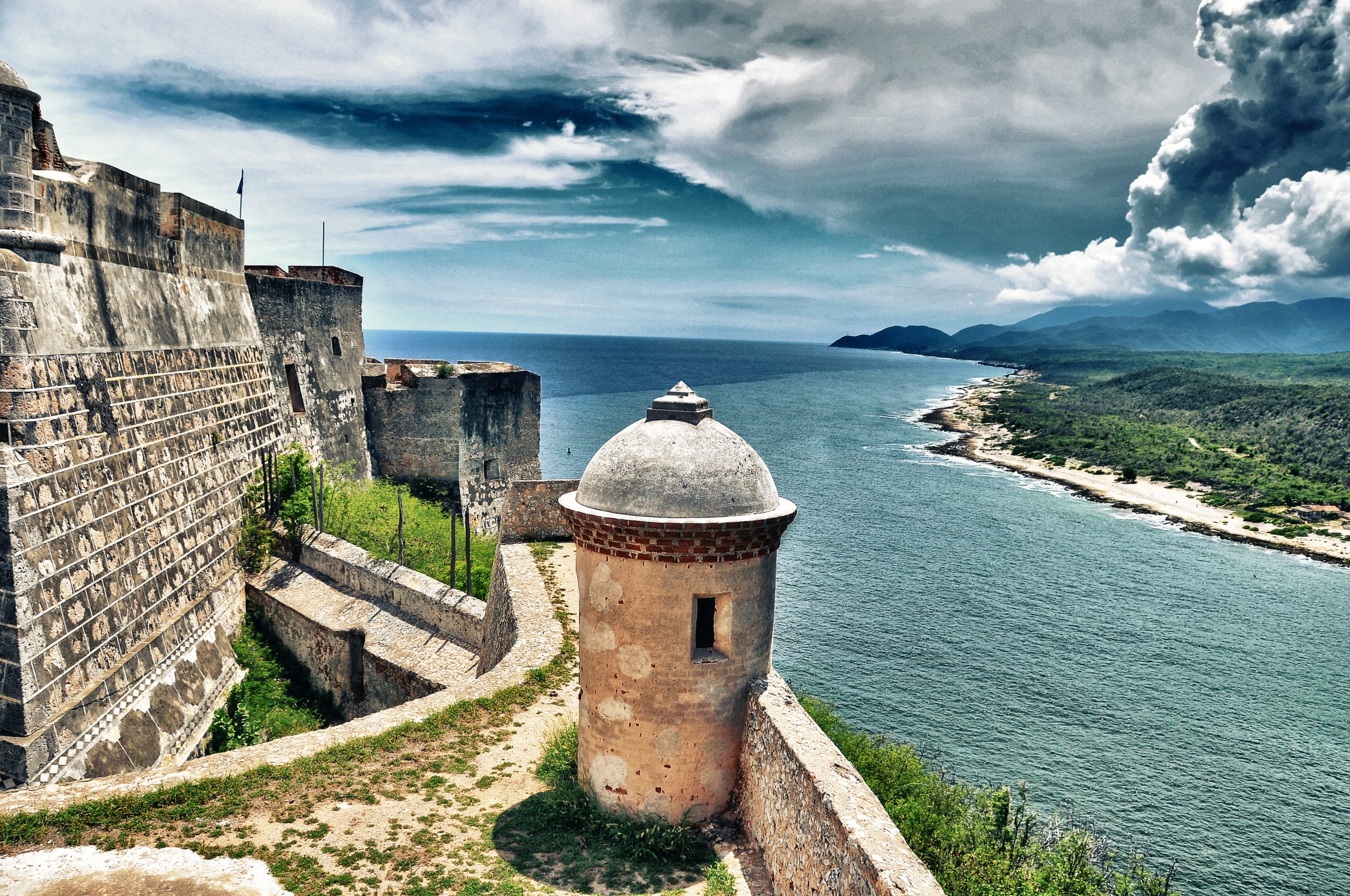Cuba’s Cultural Capital
Near the eastern tip of the island and situated closer to Haiti than Havana, Santiago de Cuba is distinct in its architecture and cultural vibe. Founded in 1514 as the second city in Cuba, its location was a crucial factor shaping this city’s unique identity, steeped in Afro-Caribbean, entrepreneurial and rebel influences. You guessed it, the historic center is a UNESCO World Heritage Site.
Santiago has many cards that Havana cannot compete with. It’s Cuba’s cultural capital, Santiago is a frenetic, passionate and noisy beauty. The Spanish-American War and key Revolution events took place here, Don Facundo Bacardí based his first-ever rum factory here, much of Cuba’s traditional music was birthed here, and the energy level is high despite the often debilitating heat. The oldest building in Cuba, El Morro Castle, is here, plus the graves of national hero José Martí and Fidel Castro. Also, Cuba’s hottest carnival is held here each July.

There’s many untold magic here too.
Much of it is centred around Santiago’s history. After all, it was the capital of Cuba for a time – Cuba Travel.
Sights to see in Santiago de Cuba
Which of Santiago de Cuba’s many sights you choose to see depends on how much time you plan to spend. Start start by exploring around Parque Céspedes, with the cathedral, Casa de Don Diego Velázquez, Museo Municipal Emilio Bacardí Moreau and the sights along Calle Heredia and Calle Padre Pico. Take a late lunch before an afternoon visiting historic sites like the Cuartel Moncada (Moncada army barracks) where you can get your fill on Fidel’s much referred to, yet messy first attack on the Batista dictatorship. The museum inside tells the story of this historical moment and its aftermath Loma de San Juan is another historic place. Later you can head for the Plaza de la Revolución, where one of the cities most prodigal sons and heroes Antonio Maceo is boldly represented in a dedicated monument.
Whilst the Cathedral depicts Christopher Columbus and Bartolome de las Casas. Arguably Santiago’s most prestigious attraction, the Spanish fortress Castillo del Morro San Pedro de la Roca is a must visit, a little outside of the city on a hilltop at the mouth of the bay of Santiago. Linger for sunset and the cannon-firing ceremony. Or explore the Reparto Los Hoyos historic district, the Tumba Frances cultural center, or wander Reparto Vista Alegre, an upscale district with eclectic museums and much-faded mansions.
If you are adventurous you can venture further afield. Consider beach time at Playa Siboney, combined with visits to Granjita Siboney and the Spanish-American War museum, plus Parque Baconao and Gran Piedra. An additional day grants time to head to Basilica del Cobre—Cuba’s top religious shrine—and maybe a scenic drive west along the Caribbean shore to Chivírico.


